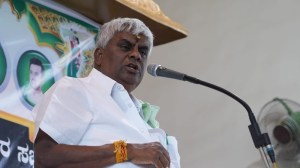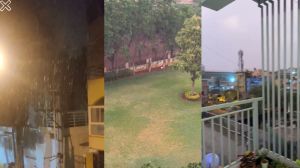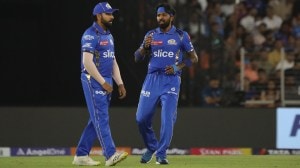- India
- International
What is GNSS and how does India’s NavIC fit in this navigation network?
Ever wondered how maps work on your phone? That’s courtesy of GNSS. Here, we break down the orbiting satellites behind the Global Navigation Satellite System.
 Multiple GNSS constellations like GPS, Galileo, and GLONASS work together to get you better navigational accuracy. (Image: Lynda Sanchez/Pixabay)
Multiple GNSS constellations like GPS, Galileo, and GLONASS work together to get you better navigational accuracy. (Image: Lynda Sanchez/Pixabay)You must have heard about the Global Navigation Satellite System (GNSS) before, possibly in relation to your phone’s mapping capabilities or a fitness tracker. The network has been helping people find their way around the globe for decades now.
But what exactly is this global navigation satellite system all about, how is it different from GPS, and where does India’s NavIC fit in all this? Let’s get right to it.
What is GNSS?
The Global Navigation Satellite System at its core is a constellation of satellites orbiting Earth, continuously beaming down radio signals containing precise time and orbital information. With at least four of these satellites in view, a GNSS receiver (like the one in your smartphone) can triangulate its position through a process called trilateration.
For full global coverage, it takes a constellation of approximately 18-30 satellites in specific orbital paths. There are several GNSS networks operated by different nations and unions around the world.
The main GNSS players
The big names in the GNSS game include the US’ GPS, Europe’s Galileo, Russia’s GLONASS, and China’s BeiDou Navigation Satellite System. These are the heavy hitters providing global positioning services. There are also some regional systems like India’s NAVIC and Japan’s QZSS that provide navigation over more localised areas rather than worldwide coverage.

Powering the GNSS capabilities on your phone or fitness tracker is a dedicated chip or module designed specifically for GNSS reception and positioning calculations. These are often made by companies like Broadcom, Qualcomm, and MediaTek.
 Garmin watches use a combination of GPS, GLONASS, Galileo, BeiDou, QZSS, and IRNSS to track position. (Image: Zohaib Ahmed/The Indian Express)
Garmin watches use a combination of GPS, GLONASS, Galileo, BeiDou, QZSS, and IRNSS to track position. (Image: Zohaib Ahmed/The Indian Express)
A brief history of GNSS
Like many other technologies in use today, the roots of GNSS can be traced back to war; specifically to the military radio navigation systems used in World War II. Systems like LORAN (long-range navigation) allowed positioning with accuracy from hundreds of feet to a few tens of feet.
The Soviet launch of Sputnik in 1957 was a catalyst, as scientists monitoring its radio signals discovered that the Doppler effect could pinpoint the satellite’s location. This discovery led to the development of the US Transit system in the 1960s, which utilised Doppler shifts to fix locations on Earth.
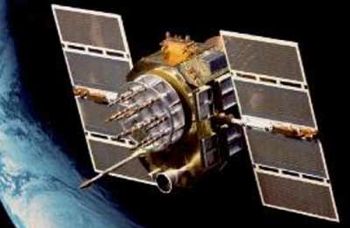 The USA 128 Block 1 satellite. (Manufacturer image)
The USA 128 Block 1 satellite. (Manufacturer image)
But the modern GNSS era dawned with the US GPS program in the 1970s. Originally created for military use, the first experimental Block I GPS satellite launched in 1978. By 1993, the full 24-satellite constellation provided worldwide coverage, later opening up for civilian and commercial applications as well.
How does GNSS actually work?
The positioning calculations rely on the trilateration method that uses distance measurements from multiple satellites.
If you can connect to just one satellite’s signal, you’re somewhere on a spherical surface area covering around 35 per cent of the Earth, which is not very helpful. Add a second satellite, and you’re now at one of the two intersection points between their respective surface areas. The third satellite narrows it down to a precise 2D coordinate on the globe’s surface.
With that critical fourth satellite, you gain the third dimension–altitude– using some trigonometry with the calculated horizontal position. More satellites can boost accuracy even further.
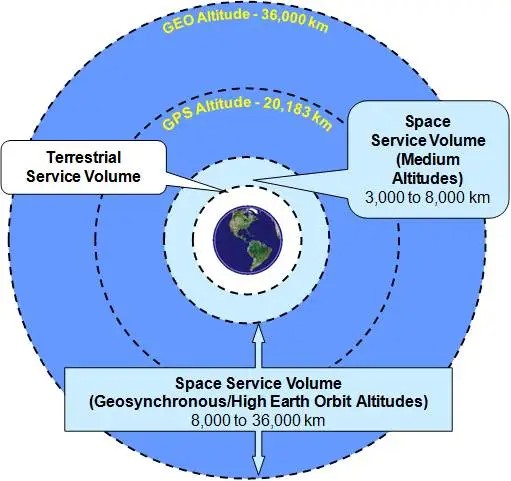 GNSS satellites reside in medium-earth orbit around 20,000 km up. (Image: NASA)
GNSS satellites reside in medium-earth orbit around 20,000 km up. (Image: NASA)
These GNSS satellites reside in medium-Earth orbit around 20,000 km up, circling the globe every 12 hours or so. The full constellations require a minimum of 24 satellites to guarantee global service 24/7. Funding nations often have spares as backups.
GPS vs GNSS – What’s the difference?
You’ll often hear “GPS” used as a catchall term for satellite navigation. But there’s an important distinction between GPS (the US system) and GNSS (the overarching concept).
GPS is just one provider of GNSS services, albeit the most prominent and widely used worldwide since achieving global coverage in the 1990s. Having access to multiple GNSS constellations boosts accuracy and availability compared to relying on just GPS alone.
So when people talk about ‘getting GPS coordinates’, they’re referring to location data from any combination of GNSS satellites, not necessarily just the GPS network.
What about NavIC? How’s it different?
Among the regional GNSS players is India’s NavIC (Navigation with Indian Constellation) system. Developed by the Indian Space Research Organisation, NavIC consists of eight satellites providing coverage across India and up to around 1,500 km from its borders. This regional focus reportedly allows NavIC to have greater accuracy than GPS. Where NavIC is claimed to offer a positioning accuracy of three metres, GPS’s accuracy hovers around five metres.
While other major GNSS constellations offer truly global coverage by circling the Earth twice daily, NavIC is currently focused on servicing the Indian subcontinent. Its use cases, so far, include vehicle tracking, emergency alerts for fishermen, and natural disaster monitoring. India, however, has ambitions to expand NavIC from a regional to a global system over time.
More Tech
May 03: Latest News
- 01
- 02
- 03
- 04
- 05















